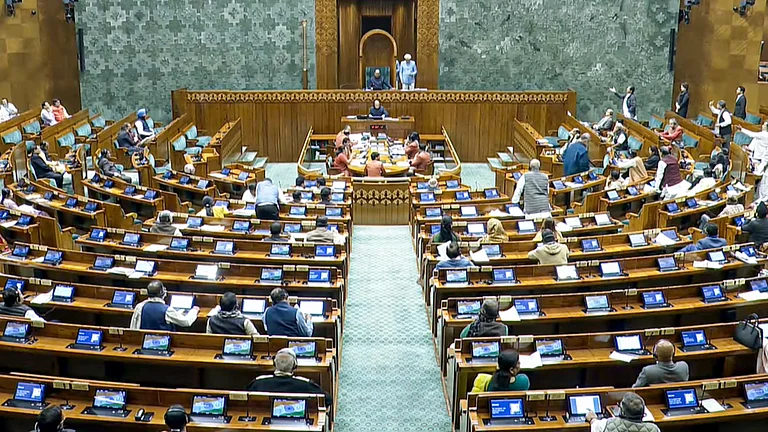Climate Change is a subject that has taken the world by storm- from signing international treaties to 13-year olds dropping out of school to protest, it is no longer a future calamity printed on school textbook pages, but rather a very current threat.
Climate Change is not only an environmental issue, it is also a threat to the financial system. Its repercussions bring about huge economic costs and financial instability originating from volatility in food prices due to unpredictable weather trends, elevated credit spreads, and greater precautionary saving. Quantitatively speaking, a 6°C warming can keep $43 trillion at risk- over 60 per cent of the market capitalisation of all the world’s stock markets.
Sustainable finance directs institutions to integrate Environmental, Social, and Governance (ESG) factors while making investment decisions in the financial sector. India is particularly vulnerable to deepening climate change and responding to this threat will require unprecedented flows of finance. One estimate suggests that $4.5 trillion is needed to achieve India’s goals for urban sustainability and renewable energy by 2040.
We investigate further through a three-way framework applied to Indian practices as well as others across the world.
Green Financial Products and Institutions in India
Green financial products aim to promote climate change-related environmental solutions. Green bonds are fixed-income financial instruments of this type. The issuer of these bonds gets the capital to finance green projects while investors receive fixed income via interests. The first green bond was introduced in 2007 and since then, the market has witnessed 50 per cent compound annual growth to emerge as a $16.3 billion market in 2020, with a growing base of institutional investors.
The Indian Green Bond Market
As of 2021, India has the second-largest emerging green bond market after China. Despite the innovations in the field since 2015 (see Figure 1), the Indian green bond market hasn’t been able to diversify itself much in terms of assets, which remain focused on renewable energy projects.Since 2018, Green bonds have constituted only 0.7 per cent of all the bonds issued in India. Bank lending to the non-conventional energy constituted about 7.9 per cent of outstanding bank credit to the power sector as of March 2020.

Figure 1: Timeline of Green Bonds in India (Source: TERI)
Let us look at some barriers impeding the growth-
1. Lack of Measures Supporting this Novel Instrument: The newness of this instrument causes the average investor to be wary, especially if the bond is not issued by one of the more recognized green sectors like renewable energy.
2. Lack of Sector Diversification in Green Bond Issuances: This is especially true for unconventional investment sectors like forestry and marine conservation, innovative transport, and new business models. With the limits of traditional bond issuances, it is difficult to finance such climate projects.
3. Lack of Standardized Frameworks for Evaluating Diverse Projects in the Indian Context: This includes a lack of accepted taxonomies, defining ‘what is green’ across different asset classes and industries, which encourages issuers and bankers to be cautious about financing new asset classes in the green bond market.
Macro-Prudential Policies and Concessional Lending
Macroprudential policies play an important role in our financial system by mitigating systemic risks. One such set of risks are tied to adverse climatic events, but along with that, the move to a low-carbon economy, with ambitious emission targets and regulations, can lead to the re-pricing of carbon-intensive assets. This can potentially burst the asset-price carbon bubble, and generate systemic risks. To deal with these, and also incentivise the redirection of credit from carbon-intensive sectors to green investments, Central Banks can step in with Green Macro-Prudential Policies. On the other hand, concessional lending practices include loans that are given at low-interest rates and are meant to encourage the growth of certain low-performing or emerging sectors.
India’s Stance on Green Policies and PSL
The RBI’s primary mandate is price stability and economic growth. In terms of green finance, no green macroprudential policies have been implemented yet. However, it is considering including environmental risks in the assessment of agricultural price developments. RBI’s concessional lending scheme (PSL), ensures that 40 per cent of commercial loans are extended to the priority sector. After the amendments made in 2012 and 2015, housing and social infrastructure and renewable energy have been included in PSL in an effort to address sustainable development.
International Best Practices of Central Banks
Emerging economies are the most engaged in pursuing green policies to reduce their already high exposure to climate change.
Brazil- The Banco Central do Brasil requires commercial banks to take E&S (Environmental and Social) stress tests into account in their lending practices, and issue annual reports that outline their risk assessment methods and exposure to E&S damages
Lebanon- The Central Bank of Lebanon offers a lower reserve ratio to banks that finance energy-saving projects.
China- The China Banking Regulatory Commission (CBRC) has issued guidelines seeking to repress credit to carbon and energy-intensive industries and encourage lending to green projects.
The RBI needs to take an active stance on E&S risk management by publishing guidelines and setting up plans for its implementation on a systemic level. As for PSL, the overall share of credit to renewable
energy projects needs to be increased. A possible incentive for banks to extend more loans in the PSL’s sustainable development sector is if E&S disclosures are made mandatory so that banks can have a higher sustainability index.
Sustainability Disclosures
Sustainability disclosures would prove to be a crucial piece of the puzzle for increasing long-term investments into sustainable economic activities. Access to reliable sources of information on the management of such risks is a prerequisite thereby emphasizing the importance of implementing proper disclosure standards.
The recommendations of the Task Force on Climate-Related Financial Disclosures (TCFD) can be considered as the gold standard on disclosures pertaining to climate-related risks. As can be seen in Fig. 2, TCFD recommends that such disclosures be structured around four key areas. About two-thirds of G20 nations have engaged with TCFD recommendations and as of January 2019, the EU has already published new guidelines on climate reporting for companies incorporating the TCFD recommendations.

Figure 2: Focus areas for a climate-related financial disclosure (Source: TCFD)
Progress in India and the Road Ahead
SEBI implemented sustainability disclosure requirements in India by introducing Business Responsibility Report (BRR) in 2012. Presently, the top 1000 listed entities at NSE and BSE based on market capitalization are required to file BRR annually. However, a 2018 Cambridge University study concluded that the BRR standard did not identify as a TCFD-compliant initiative.
From FY 2022-23, it would be mandatory for companies to file a new disclosure report - the Business Responsibility and Sustainability Report (BRSR). The update of Indian sustainability reporting standards is expected to provide greater transparency in the disclosure of ESG related information as it incorporates metrics to measure material environmental risks, energy consumption, among others, which were previously absent. However, the BRSR format still lacks multiple aspects about strategy and management of climate risks as highlighted by TCFD.
Further, uniform applicability across industries may not lead to meaningful disclosures and the government needs to push for industry-specific disclosure requirements to maximize impact. TCFD recommendations should be properly integrated into the national policy framework for at least those sectors having high climate risk exposure.
The author is a student, IIT Delhi
DISCLAIMER: Views expressed are the author's own, and Outlook Money does not necessarily subscribe to them. Outlook Money shall not be responsible for any damage caused to any person/organisation directly or indirectly.

























